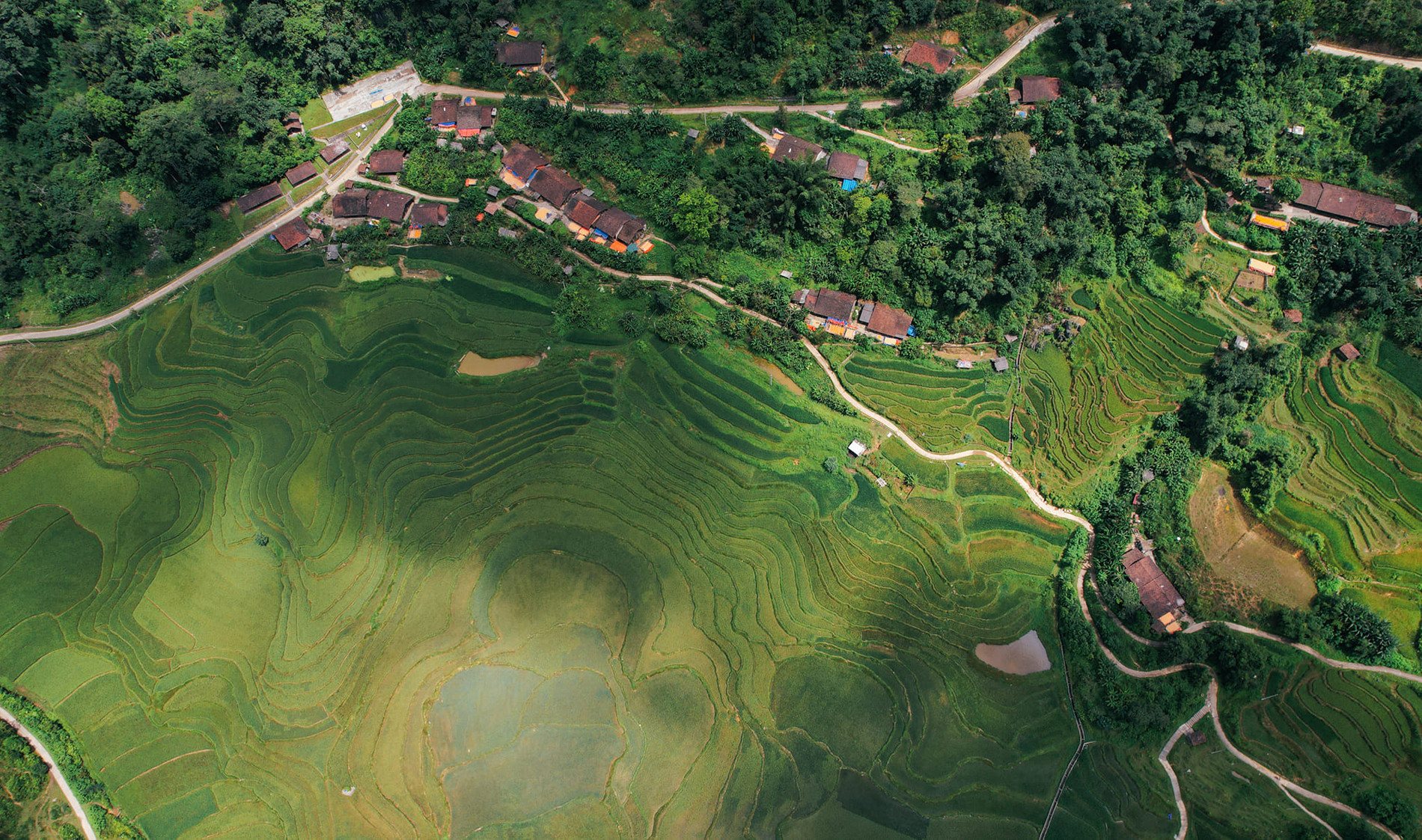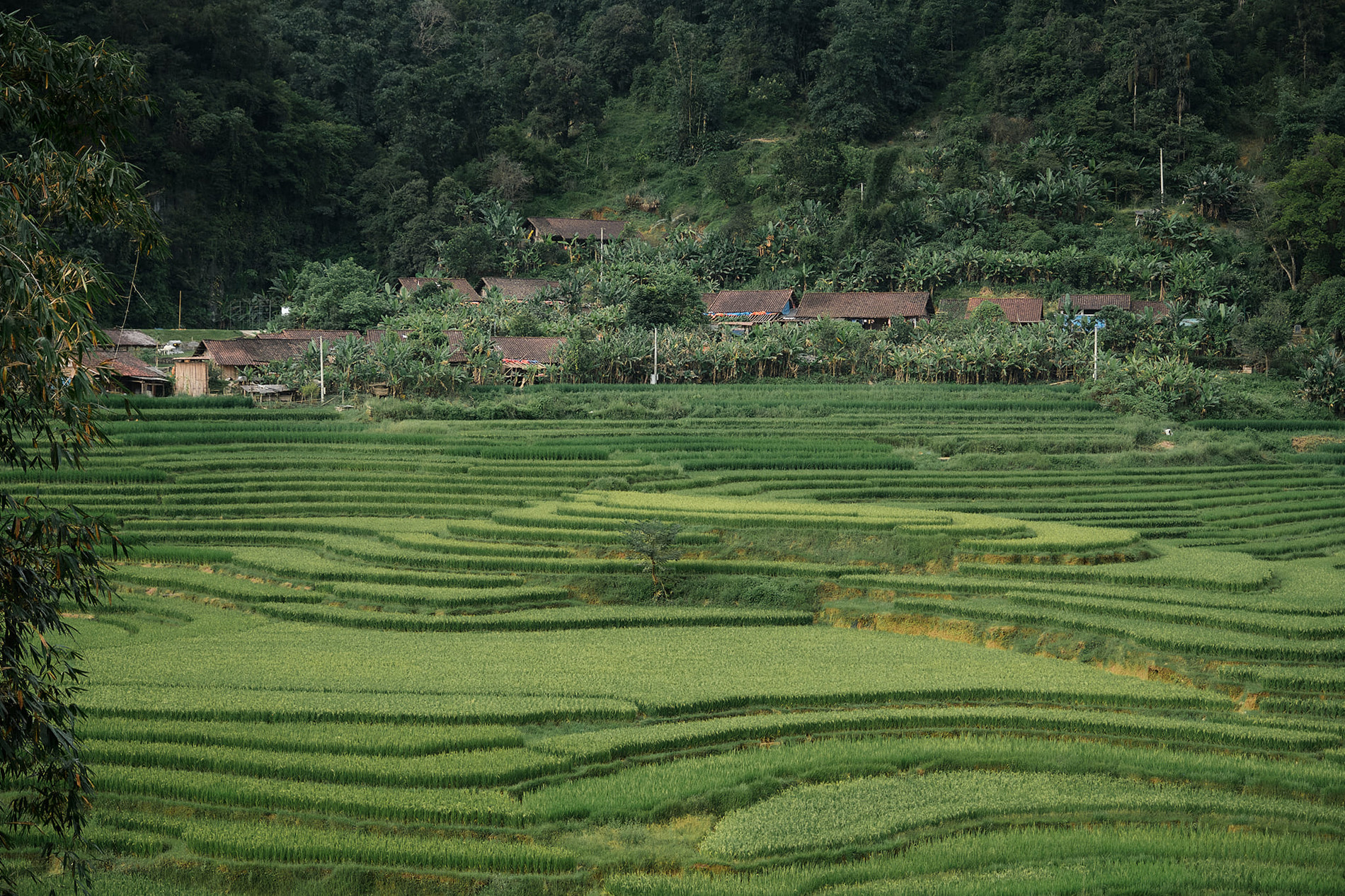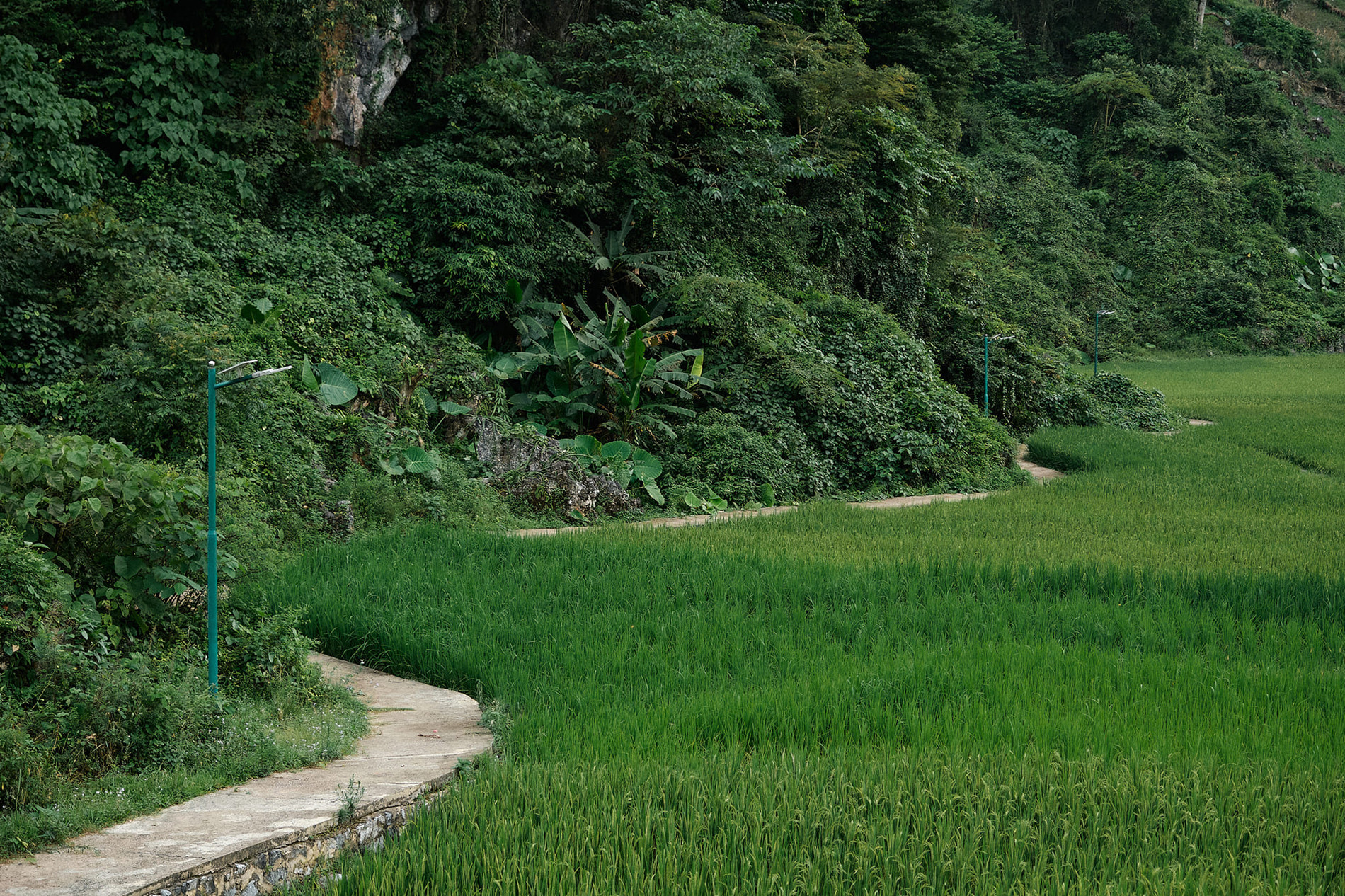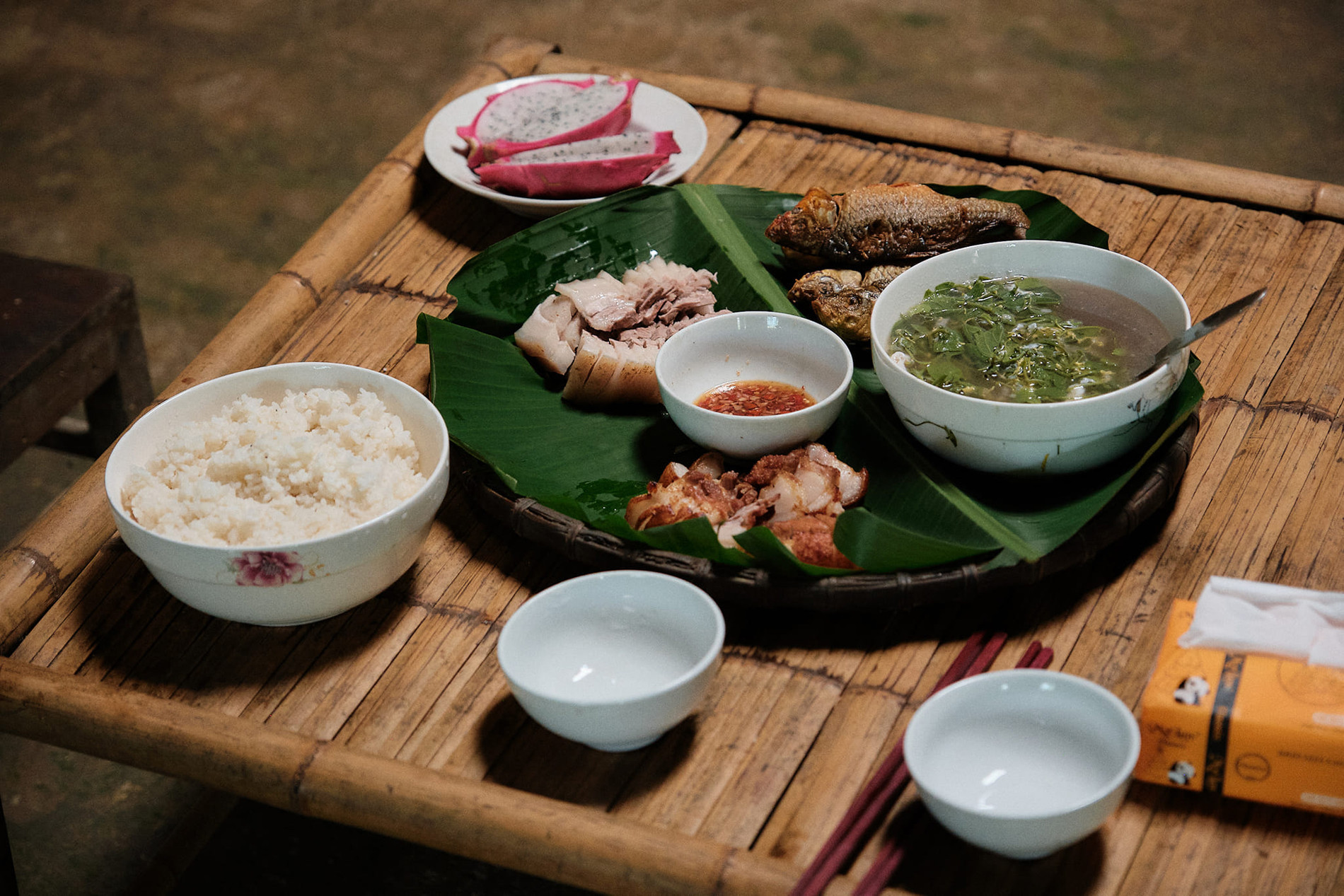Photos by Hoang Minh Duc
Thao Trinh

 |
 |
 |
 |
Home to 34 households, all from the Dao Tien ethnic group, the village preserves nearly all of its unique cultural traditions. Visitors to Hoai Khao are often struck by the traditional architecture, particularly the wooden houses with yin-yang tile roofs. Each home also has a separate wooden granary located outside.

Hoang Minh Duc, a freelance photographer from Hanoi, visited Hoai Khao in early September and was amazed by the beauty of this small village surrounded by endless rice fields.
“As a supporter of sustainable tourism, I was completely drawn to the cleanliness, orderliness, and the near-intact natural beauty and architecture that the locals have preserved,” Minh Duc shared. Initially planning a short visit, he and his friends extended their stay until late afternoon, enchanted by the village’s charm.
In addition to its breathtaking scenery, visitors to Hoai Khao can immerse themselves in the Dao Tien culture, including learning about their traditional crafts such as silver carving, beeswax pattern-making, and the local practice of catching carp in rice paddies. The Dao people also use beeswax to create intricate patterns on their clothing, producing finely detailed garments adorned with geometric shapes, animals, and plants.
 |
 |
If requested, locals can even reenact their traditional "cap sac" ceremony (a rite of passage into adulthood), which takes place only once every 10 to 15 years.
“Every resident in the village can be your tour guide. Don’t hesitate to ask them for advice to make the most of your experience,” added Minh Duc.
Minh Duc noted that the road to Hoai Khao is relatively easy to travel, even for those who may not be experienced drivers. However, he advised travelers to follow the directions to "Hoai Khao Cultural House" rather than relying solely on Google Maps, as his group found themselves 20 kilometers off course.
Hoai Khao now features seven homestays, offering visitors a chance to stay in the village and enjoy local dishes such as carp raised in rice paddies and traditional pork.

According to the photographer, the ideal time to visit Hoai Khao is from late July to mid-September, when the rice fields are in full bloom. During this period, the village offers picturesque views perfect for photography, ensuring beautiful memories for every visitor.
Although still relatively new to Cao Bang's tourism map, Hoai Khao has left a lasting impression on everyone who visits. The village embodies the principles of sustainable tourism, prioritizing the preservation of nature and cultural heritage.
“Hoai Khao is an ideal destination for those who enjoy experiential tourism and local culture. I hope the village remains authentic and doesn’t lose its identity through over-commercialization,” Minh Duc concluded.
 |
 |

 |
 |
Photos by Hoang Minh Duc
Thao Trinh